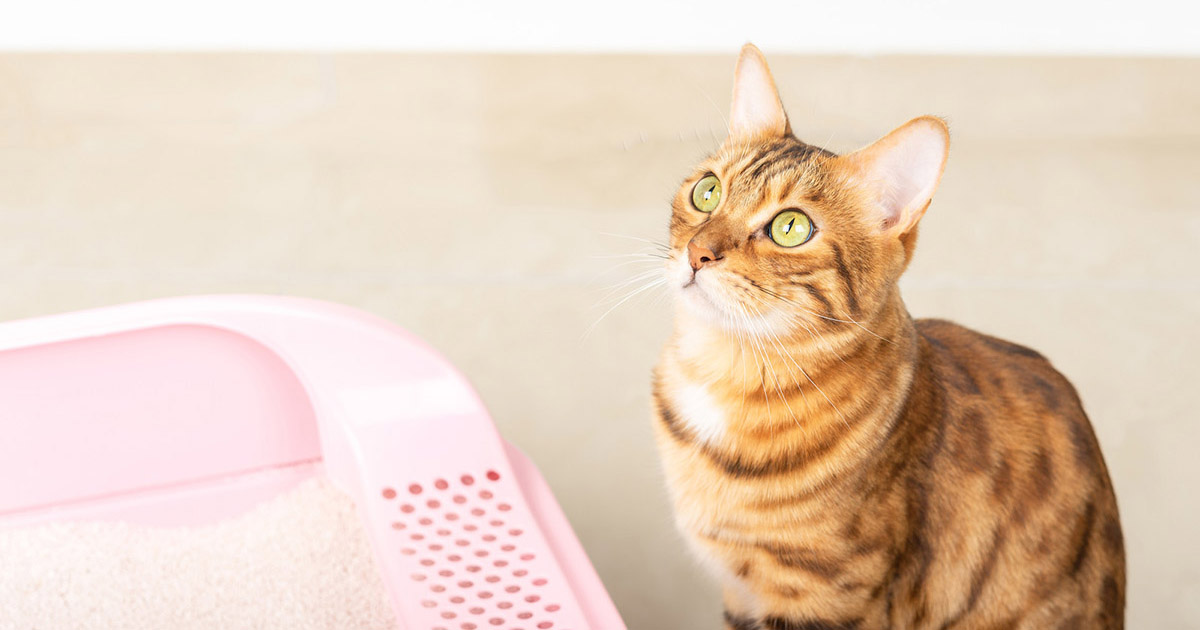The Dangers of Flushing Cat Poop Down Your Toilet - Advice for Safer Disposal
The Dangers of Flushing Cat Poop Down Your Toilet - Advice for Safer Disposal
Blog Article
The article following next on the subject of Can You Flush Cat Poo or Litter Down the Toilet? is especially remarkable. Check it out yourself and see what you think of it.

Introduction
As pet cat proprietors, it's important to be mindful of how we dispose of our feline close friends' waste. While it might seem hassle-free to purge pet cat poop down the toilet, this technique can have damaging effects for both the atmosphere and human wellness.
Ecological Impact
Purging pet cat poop presents unsafe pathogens and parasites right into the water system, posing a substantial risk to water communities. These contaminants can negatively affect aquatic life and compromise water top quality.
Wellness Risks
Along with environmental worries, purging pet cat waste can additionally pose health and wellness risks to humans. Pet cat feces might contain Toxoplasma gondii, a bloodsucker that can cause toxoplasmosis-- a potentially serious disease, particularly for pregnant women and individuals with weakened immune systems.
Alternatives to Flushing
Luckily, there are more secure and extra accountable ways to dispose of pet cat poop. Take into consideration the following options:
1. Scoop and Dispose in Trash
One of the most typical approach of getting rid of feline poop is to scoop it into a naturally degradable bag and throw it in the garbage. Be sure to make use of a devoted trash scoop and throw away the waste promptly.
2. Usage Biodegradable Litter
Go with eco-friendly pet cat trash made from products such as corn or wheat. These clutters are environmentally friendly and can be securely gotten rid of in the trash.
3. Bury in the Yard
If you have a lawn, take into consideration hiding cat waste in a designated area away from vegetable gardens and water sources. Be sure to dig deep enough to avoid contamination of groundwater.
4. Set Up a Pet Waste Disposal System
Buy a pet waste disposal system especially created for cat waste. These systems utilize enzymes to break down the waste, decreasing smell and ecological impact.
Verdict
Responsible family pet possession extends beyond giving food and sanctuary-- it also includes correct waste management. By avoiding flushing feline poop down the bathroom and choosing alternative disposal methods, we can decrease our environmental impact and protect human wellness.
Why Can’t I Flush Cat Poop?
It Spreads a Parasite
Cats are frequently infected with a parasite called toxoplasma gondii. The parasite causes an infection called toxoplasmosis. It is usually harmless to cats. The parasite only uses cat poop as a host for its eggs. Otherwise, the cat’s immune system usually keeps the infection at low enough levels to maintain its own health. But it does not stop the develop of eggs. These eggs are tiny and surprisingly tough. They may survive for a year before they begin to grow. But that’s the problem.
Our wastewater system is not designed to deal with toxoplasmosis eggs. Instead, most eggs will flush from your toilet into sewers and wastewater management plants. After the sewage is treated for many other harmful things in it, it is typically released into local rivers, lakes, or oceans. Here, the toxoplasmosis eggs can find new hosts, including starfish, crabs, otters, and many other wildlife. For many, this is a significant risk to their health. Toxoplasmosis can also end up infecting water sources that are important for agriculture, which means our deer, pigs, and sheep can get infected too.
Is There Risk to Humans?
There can be a risk to human life from flushing cat poop down the toilet. If you do so, the parasites from your cat’s poop can end up in shellfish, game animals, or livestock. If this meat is then served raw or undercooked, the people who eat it can get sick.
In fact, according to the CDC, 40 million people in the United States are infected with toxoplasma gondii. They get it from exposure to infected seafood, or from some kind of cat poop contamination, like drinking from a stream that is contaminated or touching anything that has come into contact with cat poop. That includes just cleaning a cat litter box.
Most people who get infected with these parasites will not develop any symptoms. However, for pregnant women or for those with compromised immune systems, the parasite can cause severe health problems.
How to Handle Cat Poop
The best way to handle cat poop is actually to clean the box more often. The eggs that the parasite sheds will not become active until one to five days after the cat poops. That means that if you clean daily, you’re much less likely to come into direct contact with infectious eggs.
That said, always dispose of cat poop in the garbage and not down the toilet. Wash your hands before and after you clean the litter box, and bring the bag of poop right outside to your garbage bins.
https://trenchlesssolutionsusa.com/why-cant-i-flush-cat-poop/

As a keen person who reads about Can You Flush Cat Poo or Litter Down the Toilet?, I imagined sharing that piece of content was worthwhile. Do you know about another individual who is fascinated by the niche? Be sure promote it. I love reading our article about Can You Flush Cat Poo or Litter Down the Toilet?.
Book Service Now Report this page